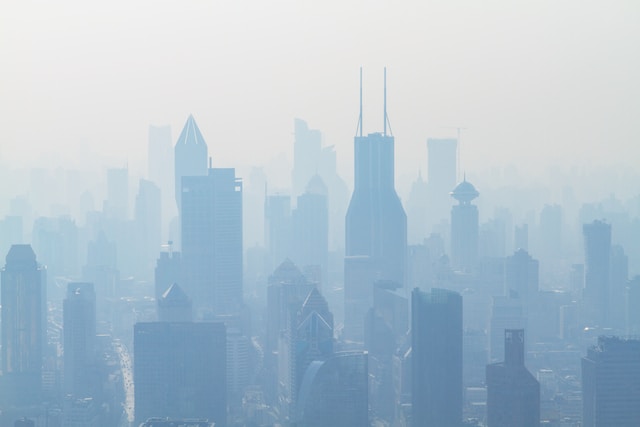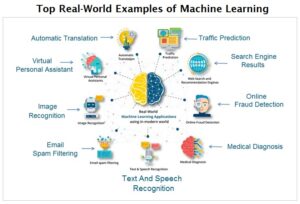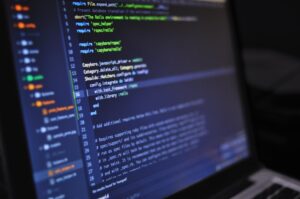Artificial intelligence (AI) has the chance to revolutionize environmental efforts against air pollution. Its unique applications set it apart from other current technology, making it an ideal choice despite some implementation obstacles.
How Does Air Pollution Affect Us?
Air pollution is a significant issue because it has adverse environmental and health effects. Many people live in areas with ongoing quality issues. As of July 2023, the U.S. Environmental Protection Agency has identified 15 counties exceeding safe pollutant levels, affecting nearly 21 million people.
However, pollutants may affect more people than most public numbers show. In 2023, the Natural Resources Defense Council analyzed the EPA’s data, finding an additional 8 million Americans inhale hazardous levels of air pollution from soot alone.
Why Do We Need a New Solution?
Most people inhale pollutants and contaminants without even realizing it. In fact, 90% of the global population breathes air with pollution levels exceeding the World Health Organization’s guidelines. This statistic is concerning, considering even short-term exposure can have lasting adverse health effects.
While avoiding visible pollutants like smog or soot may be possible, most — like carbon dioxide or nitrogen oxide — are invisible to the human eye. People need technological help to detect, measure and manage this issue to improve their health.
Current technology simply can’t perform as the world needs it to. For example, the U.S. Government Accountability Office discovered the country’s air quality monitoring system is substandard. It doesn’t provide enough relevant data for researchers or the public to use effectively.
Most people want a long-term technological solution capable of collecting, storing and acting on up-to-date air pollution data. Typically, such devices would be costly and challenging to install. However, AI can address these needs and doesn’t have the same limitations.
Can AI Help Get Rid of Air Pollution?
AI can help people around the world get rid of air pollution. These models thrive on data and intelligent analysis, crucial factors when dealing with such a widespread problem. It’s not just a potential solution, either — researchers and engineers around the globe have separately developed models as proof-of-concept.
For instance, engineers from Cornell University developed AI capable of accurately measuring PM2.5 — fine particles of pollution smaller than the width of a human hair — in urban areas. While previous technology was heavy, bulky and complex, this model is simple and accessible.
How Can AI Reduce Air Pollution?
AI can detect, measure and manage pollutant levels to reduce air pollution. Additionally, it can aid research and maintenance efforts to support current technology.
-
Detection
AI can accurately identify sources of air pollution, allowing government environmental agencies to respond swiftly with containment measures. Since this tech can consistently adapt to new information and learn rapidly, it can react to minor real-time changes.
It can alert the relevant parties if pollutants suddenly spike or consistently appear in particular areas. For example, say a small town near a production plant regularly exceeded safe air quality levels despite its lack of highways or a large population. Once AI directs officials to the factory as the most likely culprit, they could implement air pollution policies to protect the local’s health.
-
Measurement
Since air pollution levels are generally consistent unless an exceptional event happens, AI can easily train on historical and current statistics to forecast future changes. It can rapidly interpret massive data sets to come to precise conclusions.
Real-time updates to pollutant measurements would be beneficial for public safety. With this approach, officials could warn specific populations of impending drops in air quality, improving their health. Additionally, it gives them more time to take action to better protect the environment.
-
Management
Most researchers use deep neural networks when managing air pollution with AI. It’s no surprise, considering they have the highest performance rate out of any other subset. Since they operate like the human brain, they can identify and prioritize solutions to reduce pollutant levels.
-
Research
Since air quality monitoring systems often fail to collect enough information, people often have to do their own research to build a model. As a result, its overall accuracy may not be affected. In response, researchers can utilize AI to create synthetic data.
AI can produce precise artificial data sets customized to their needs. Instead of relying on publicly available information, they can rapidly train their algorithm on life-like statistics to get an accurate general overview.
-
Maintenance
Engineers working on air quality monitoring systems can use AI for maintenance. While this method doesn’t directly address the overall issue, it still contributes to the solution. Leveraging predictive analytics, a machine-learning model can accurately project when the equipment will need servicing. Since they are essentially data collection units, this approach has circular benefits.
Are There Obstacles to AI Implementation?
AI faces some significant obstacles to implementation, mainly due to data isolation. Environmental institutions often handle their research independently, meaning they don’t share findings or statistics. This practice results in data silos, where valuable information sits in small, inaccessible pockets.
AI could forecast air quality levels precisely with historic, location, traffic and weather statistics already in existence. However, the problem is that everything currently sits in silos. This information isolation phenomenon could set progress back since models are only effective when they have quality data sets to train on.
Is Using AI to Reduce Air Pollution Risky?
Although AI is an ideal solution to air pollution, it has some risks. It may train on inaccurate data, affecting its performance. Researchers also often can’t follow its logic to diagnose operational issues.
The black-box problem AI often experiences is incredibly noticeable with deep neural networks — one of the most common subsets people use to combat air pollution. Since it’s nearly impossible to trace the logic of such models, researchers and engineers risk inaccurate functioning.
What happens when training data has miscalculations or underlying bias? The black-box problem increases the chance such things will stay hidden. Additionally, it makes routine and unplanned maintenance challenging because it can be difficult to determine where issues originate.
Why Use AI Over Other Technology?
Despite its drawbacks, AI is still the ideal choice over other modern technology. For example, a widespread installation process for Internet of Things (IoT) devices would take ages, be incredibly expensive and likely harm the environment. On top of this, they’re not nearly as effective.
Even though IoT sensors are cost-effective, their accuracy routinely plummets due to weather interference, circuitry issues and pollutant mixing. AI can continue to function efficiently in bad weather and identify minor variations if it is powerful or has enough training.
Does AI Have Potential in This Field?
While there are multiple obstacles to extensive AI use in air quality monitoring, it could still be revolutionary for the field. Its prediction and analytic capabilities are unique, making it one of the only applicable technologies. Plus, its ease of use and practicality make it accessible, which is essential when most efforts are isolated.
It may not be the perfect solution, but it is among the best in existence. Equipment modernization will only benefit researchers and the general population, so its integration may even be necessary. After all, 99% of people worldwide breathe air with some level of hazardous pollutants — a rapid solution is crucial.
Breathe Better With AI
Since air pollution is such a significant, widespread issue, it needs a powerful solution. AI is the ideal choice in this scenario, considering it can operate independently and with great precision. Ultimately, its extensive use could benefit the entire world.










